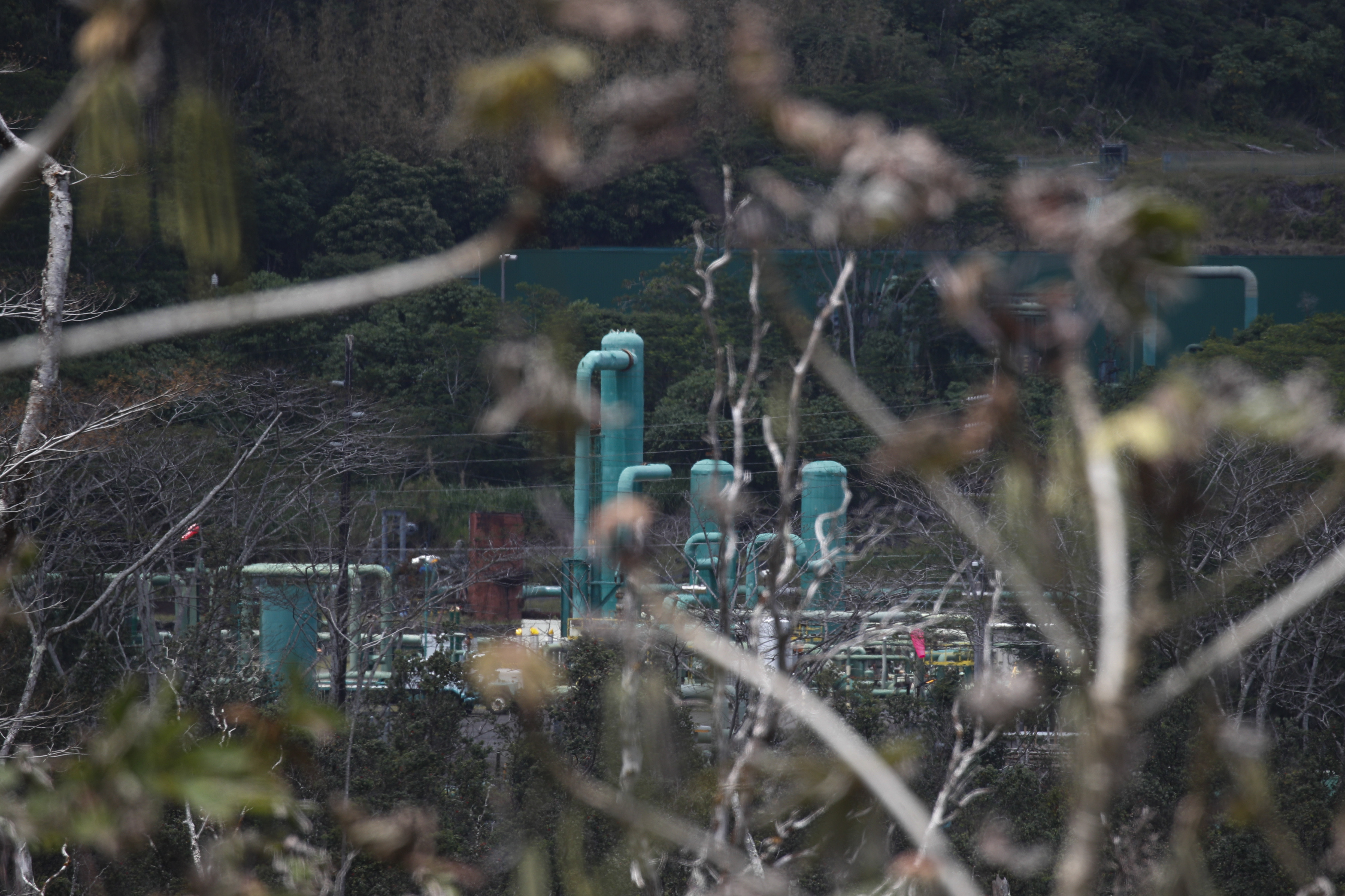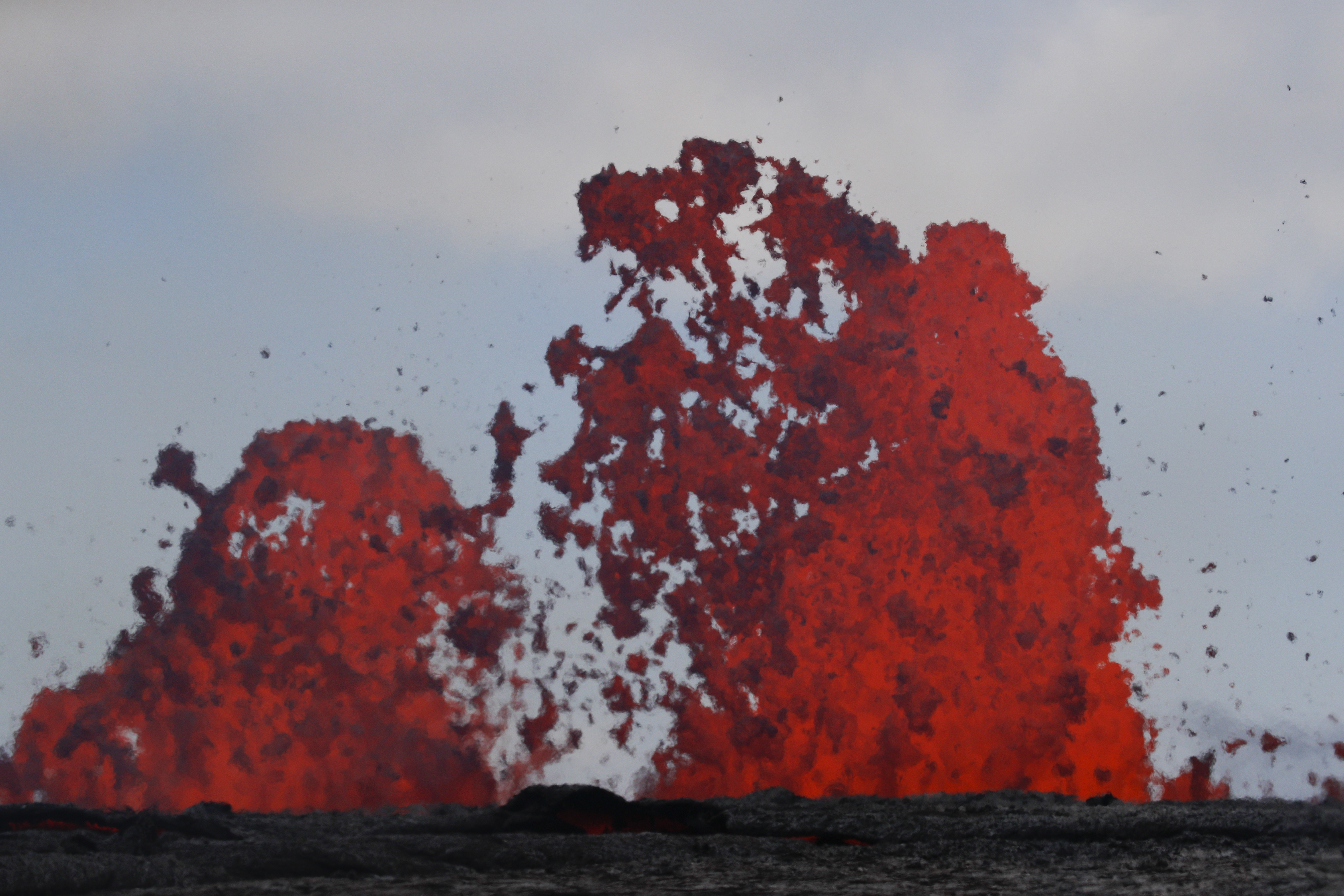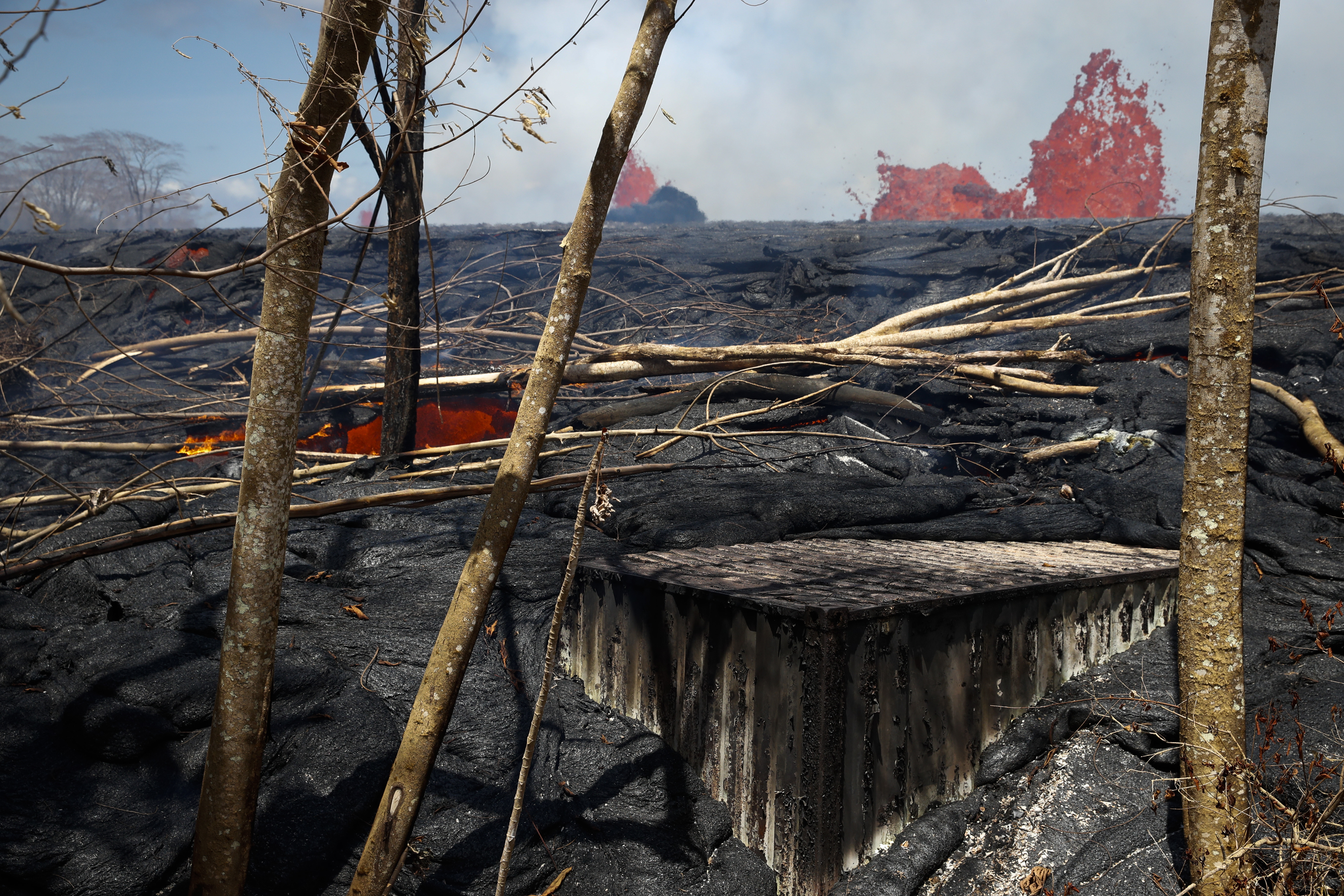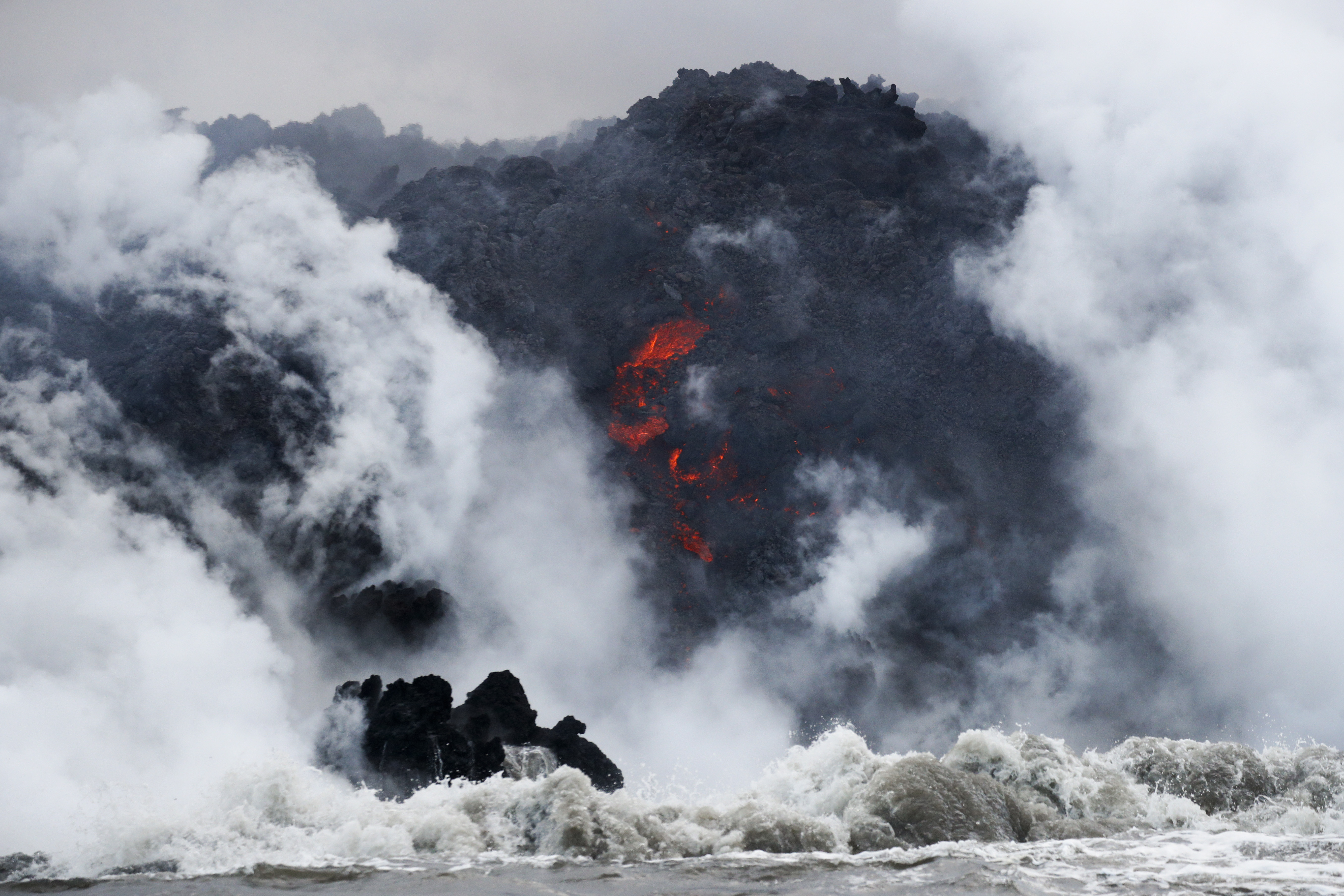Geothermal plant takes action amid threat from Hawaii volcano lava flow
The plant, which harnesses heat and steam from the earth’s core to spin turbines to generate power, was shut down after Kilauea began spewing lava.

Production wells at a geothermal plant under threat by lava flowing from Hawaii’s Kilauea volcano have been plugged to prevent toxic gases from seeping out.
Lava from a nearby new volcanic vent entered, then stalled, on the 815-acre (329.8 hectare) property where the Puna Geothermal Venture wells occupy around 40 acres (16 hectares).
Residents have been concerned about hazards if the lava flowed over the plant’s facilities, or if heat generated would interact with various chemicals used on-site.
Ten wells were “quenched”, which cools them with enough cold water to counter the pressure of volcanic steam coming from below, said Hawaii governor David Ige.

Metal plugs in the wells, which run as deep as 8,000ft (2,438 metres) underground, are an additional stopgap measure.
“All wells are stable at this point,” said Mr Ige.
County officials are also monitoring various gases that may leak into the atmosphere.
A spike in gas levels could prompt a mass evacuation, said Hawaii County civil defence administrator Talmadge Magno.

The plant harnesses heat and steam from the earth’s core to spin turbines to generate power.
A flammable gas called pentane is used as part of the process, though officials earlier this month removed 50,000 gallons (190,000 litres) of the gas from the plant to reduce the chance of explosions.
The plant has the capacity to produce 38 megawatts of electricity, providing roughly one-quarter of the Big Island’s daily energy demands.
Lava destroyed a building near the plant late on Monday, bringing the total number of structures overtaken in the past few weeks to nearly 50, including dozens of homes.

The building was owned by the state and was used in geothermal research projects in the early days of the site.
Native Hawaiians have long expressed frustration with the plant since it came online in 1989; they say it is built on sacred land.
Goddess of fire Pele is believed to live on Kilauea volcano, and the plant itself is thought to desecrate her name.
Other residents have voiced concerns over health and safety.
Scientists, however, say the conditions on Kilauea make it a good site for harnessing the earth for renewable energy.
“There’s heat beneath the ground if you dig deep enough everywhere,” said Laura Wisland, a senior analyst at the Union of Concerned Scientists.
But in some places in the US “it’s just hotter, and you can access the geothermal energy more easily”.
Geothermal energy is also considered a clean resource as it does not generate greenhouse gas emissions, said Bridget Ayling, the director of Nevada’s Great Basin Centre for Geothermal Energy.
Ormat said in a May 15 statement that there was a low risk of surface lava making its way to the facility.
The company also said there was no damage to the facilities above-ground and that it was continuing to assess the impact.
The plant is expected to begin operating “as soon as it is safe to do so”, according to the statement.

Kilauea’s summit is now belching 15,000 tons (13,607 metric tons) of the gas each day, up from 6,000 tons (5,443 metric tons) daily prior to the May 3 eruption.
Scientists say lava from Kilauea is causing explosions as it enters the ocean, which can look like fireworks.
When lava hits the sea and cools, it breaks apart and sends fragments flying into the air, which could land on boats in the water, said US Geological Survey scientist Wendy Stovall.
Underscoring the eruption’s dangers, a Hawaii man who was hit by a flying piece of lava over the weekend said the molten rock nearly sheared his leg in half.
Darryl Clinton told the Honolulu television station KHON that he was on the roof of a home helping to put out fires from flying rocks when an explosion a few hundred yards away launched a “lava bomb” his way.
It hit him above the ankle.
Mr Clinton said doctors saved his leg but he must avoid putting weight on it for six weeks.
He was the first to suffer a major injury because of the eruption.





